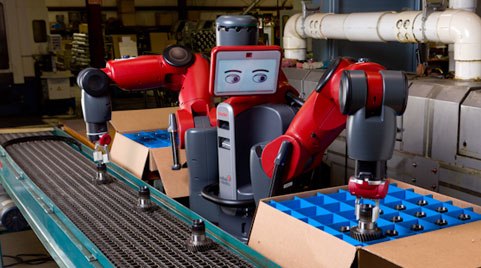Surgical robots simultaneously break ground, endure scrutiny
Yesterday Mazor Robotics announced the world’s first (and second, and third) successful robot-aided deep brain stimulation (DBS) procedures.
Using Mazor’s Renaissance robotic guidance system, neurosurgeon Nizam Razack performed the procedure at Celebration Health Hospital in Orlando, Fla. DBS, a recognized treatment for Parkinson’s Disease, involves surgically implanting a small battery-operated neurostimulator to deliver electrical stimulation to targeted areas in the brain that control movement. As with all brain surgery, it requires extreme precision and care, making the potential contributions of robotics evident. He later went on to perform two more successful surgeries.
“Mazor Robotics Renaissance increases guidance accuracy during the procedure and adds an extra element of safety for patients undergoing this major operation,” Razack said in a statement. “The technology also allows for less time in the operating room. I’ve performed over a thousand DBS procedures and I was eager to be a part of introducing this revolutionary technology into the neurosurgical field.”
This success follows on from June’s announcement of the completion of less complicated brain biopsies employing the Renaissance system at HSK Hospital in Weisbaden, Germany. Razack’s three successful DBS procedures join 36 brain biopsies to date to form a body of evidence that Mazor hopes to leverage into a wider commercial launch for the brain surgery application in early 2014.
While this achievement is surely the type of progress that will aid Mazor in continuing to report the level of success seen in their recent financial results, all is not equally well in the broader field of surgical robotics.
According to various sources (here and here for example), a recent report from a Johns Hopkins-based research team published in the Journal for Healthcare Quality has presented evidence that “slapdash” record-keeping of surgical complications involving robotic systems has led to significant under-reporting.
The document notes that out of more than 1 million robotics-aided surgeries performed in the U.S. since 2000, only 245 complications and 71 deaths have been officially reported to the U.S. Food and Drug Administration, a process that involves the hospital notifying the manufacturer who is then expected to pass on relevant information to the FDA. This reported number, said author Martin Makary, “is very low for any complex technology used over a million times. Doctors and patients can’t properly evaluate safety when we have a haphazard system of collecting data that is not independent and not transparent. There may be some complications specific to the use of this device, but we can only learn about them if we accurately track outcomes.”
Prior to that report, market-leader Intuitive Surgical – maker of the da Vinci system involved in a very large percentage of robotics-aided surgeries since the product’s launch in 2000 – was already facing a well-publicized string of concerns over various cases of surgical complications.
Since the initial reports from Bloomberg in late February of an increase in regulatory scrutiny facing Intuitive in the wake of a rise in reported complications, controversy over the ongoing use of da Vinci robots has only escalated, with the receipt of a warning letter from the FDA dated July 16 leading directly to a significant drop in stock value. Alongside a recall of 30 da Vinci systems due to improper testing in early July, and various ongoing legal actions, Intuitive has found itself in a firestorm of controversy over robotics-aided surgery more generally.
That this comes just as the work of firms such as Mazor demonstrates the huge and varied promise of robots in the operating room only highlights the likelihood of this conversation continuing well into the future.



